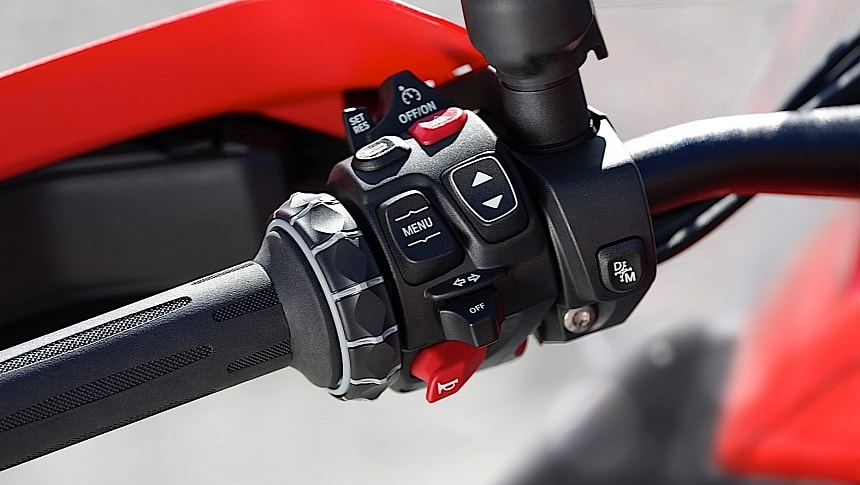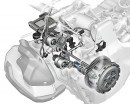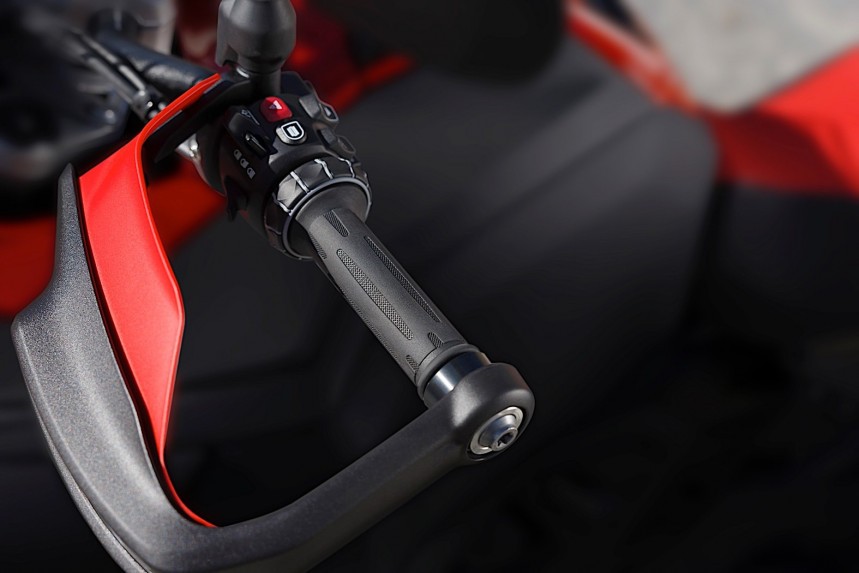Motorcycle riding is a relatively easy thing to do, once you get the hang of it. Even the two most challenging things for newbies, keeping one's balance and gear shifting, tend to fade into the background once some experience is gained, and, like everything else about motorcycling, these things become instinctual. That means we rarely give them any thought and don't realize there could be easier ways of, say, changing gears.
Just as it happens with cars, motorcycles come with either manual or automatic transmissions. In the case of the former design, we're talking about trannies with five or six speeds, that need the operation of the clutch but also of a foot pedal. Automated ones, on the other hand, handle tasks on their own.
There are pros and cons to both of these designs. When it comes to a manual, just as it happens with cars, the rider is much more in control of what the bike offers, and they have a direct impact on acceleration, fuel consumption, and bike behavior. These things could, however, be harder to ride, especially for the inexperienced, and if improperly operated, could lead to stalling.
Automated trannies, on the other hand, are a lot easier to use and can prove godsent in crowded urban environments. There's no stalling to speak of, because a computer handles the clutch and shifting, but fuel consumption could be higher and the cost of an auto, both initially and maintenance-wise, tends to be higher as well.
But what if someone could blend in all the pros of the two designs and eliminate most of the cons? That's what the Germans from BMW Motorrad claim to have achieved when they unveiled the Automated Shift Assistant (ASA) late last week.
Described as an "innovative technical solution that makes riding simpler and more comfortable," ASA basically automates clutch operation at all times and gearshifting when the rider desires this - the system allows the rider to choose between manual and automated operation.
The system works thanks to two electromechanical actuators designed to take control over the clutch and gearshifting in six-speed transmissions. But, again, that only happens when the rider desires it.
ASA comes with two modes, namely M and D. Both, we're promised, deliver "perfectly executed gear changes with a smooth interruption of traction", and that translates into more efficient acceleration and stability. But there are key differences between the two as well.
When in M mode, ASA allows riders to make gear changes whenever they see fit by using the foot pedal, but with some assistance from the system if there’s a need for it. More specifically, if the engine's revs are in the target area, gear shift occurs directly. But if the numbers don't fit, the system takes over downshifting even in M mode. This, says BMW, should help prevent stalling.
When in D, the system decides when to perform gear changes, depending on riding mode, engine revs, throttle position and lean angle parameters.
Either way, the tech pretty much eliminates the clutch lever from the equation, as the operation of this particular system is performed at all times by the ASA.
Because of this, says BMW, some of the most annoying things associated with a manual clutch are eliminated. Say bye to the jolt one feels when shifting up, or to the occasional bumping of helmets between rider and passenger. And gone is the roughness of the ride one feels from time to time when downshifting.
The way the system works its magic on the clutch is pretty simple. One of the actuators I mentioned earlier springs into action and engages the clutch as soon as the control unit receives a shift request detected by a gearshift lever sensor, which in turn is activated by the conventional foot-operated gearshift lever.
BMW says ASA perfectly integrates with some of the systems its bikes usually come with, including riding modes, active cruise control, or the front collision warning system.
There are a number of advantages ASA brings to the table, one of the most important of them being, of course, the removal of the clutch lever from the equation. Then comes the fact that gear shift sequences are very precise, and there should be no more stalling.
Above all of that, however, is the fact that ASA is a sort of two-in-one system, allowing the rider a choice between using a manual tranny or an automated one.
The tech is an evolution of the existing Shift Assistant Pro, but we're not given any indication as to when it will become available for customers, or what bikes will get it. The bike maker does mention "the powerful boxer engine" when talking about this tech, and that had us thinking about the R range.
We'll keep an eye out for developments on this topic, and update the story appropriately.
There are pros and cons to both of these designs. When it comes to a manual, just as it happens with cars, the rider is much more in control of what the bike offers, and they have a direct impact on acceleration, fuel consumption, and bike behavior. These things could, however, be harder to ride, especially for the inexperienced, and if improperly operated, could lead to stalling.
Automated trannies, on the other hand, are a lot easier to use and can prove godsent in crowded urban environments. There's no stalling to speak of, because a computer handles the clutch and shifting, but fuel consumption could be higher and the cost of an auto, both initially and maintenance-wise, tends to be higher as well.
But what if someone could blend in all the pros of the two designs and eliminate most of the cons? That's what the Germans from BMW Motorrad claim to have achieved when they unveiled the Automated Shift Assistant (ASA) late last week.
Described as an "innovative technical solution that makes riding simpler and more comfortable," ASA basically automates clutch operation at all times and gearshifting when the rider desires this - the system allows the rider to choose between manual and automated operation.
ASA comes with two modes, namely M and D. Both, we're promised, deliver "perfectly executed gear changes with a smooth interruption of traction", and that translates into more efficient acceleration and stability. But there are key differences between the two as well.
When in M mode, ASA allows riders to make gear changes whenever they see fit by using the foot pedal, but with some assistance from the system if there’s a need for it. More specifically, if the engine's revs are in the target area, gear shift occurs directly. But if the numbers don't fit, the system takes over downshifting even in M mode. This, says BMW, should help prevent stalling.
When in D, the system decides when to perform gear changes, depending on riding mode, engine revs, throttle position and lean angle parameters.
Either way, the tech pretty much eliminates the clutch lever from the equation, as the operation of this particular system is performed at all times by the ASA.
Because of this, says BMW, some of the most annoying things associated with a manual clutch are eliminated. Say bye to the jolt one feels when shifting up, or to the occasional bumping of helmets between rider and passenger. And gone is the roughness of the ride one feels from time to time when downshifting.
BMW says ASA perfectly integrates with some of the systems its bikes usually come with, including riding modes, active cruise control, or the front collision warning system.
There are a number of advantages ASA brings to the table, one of the most important of them being, of course, the removal of the clutch lever from the equation. Then comes the fact that gear shift sequences are very precise, and there should be no more stalling.
Above all of that, however, is the fact that ASA is a sort of two-in-one system, allowing the rider a choice between using a manual tranny or an automated one.
The tech is an evolution of the existing Shift Assistant Pro, but we're not given any indication as to when it will become available for customers, or what bikes will get it. The bike maker does mention "the powerful boxer engine" when talking about this tech, and that had us thinking about the R range.
We'll keep an eye out for developments on this topic, and update the story appropriately.








